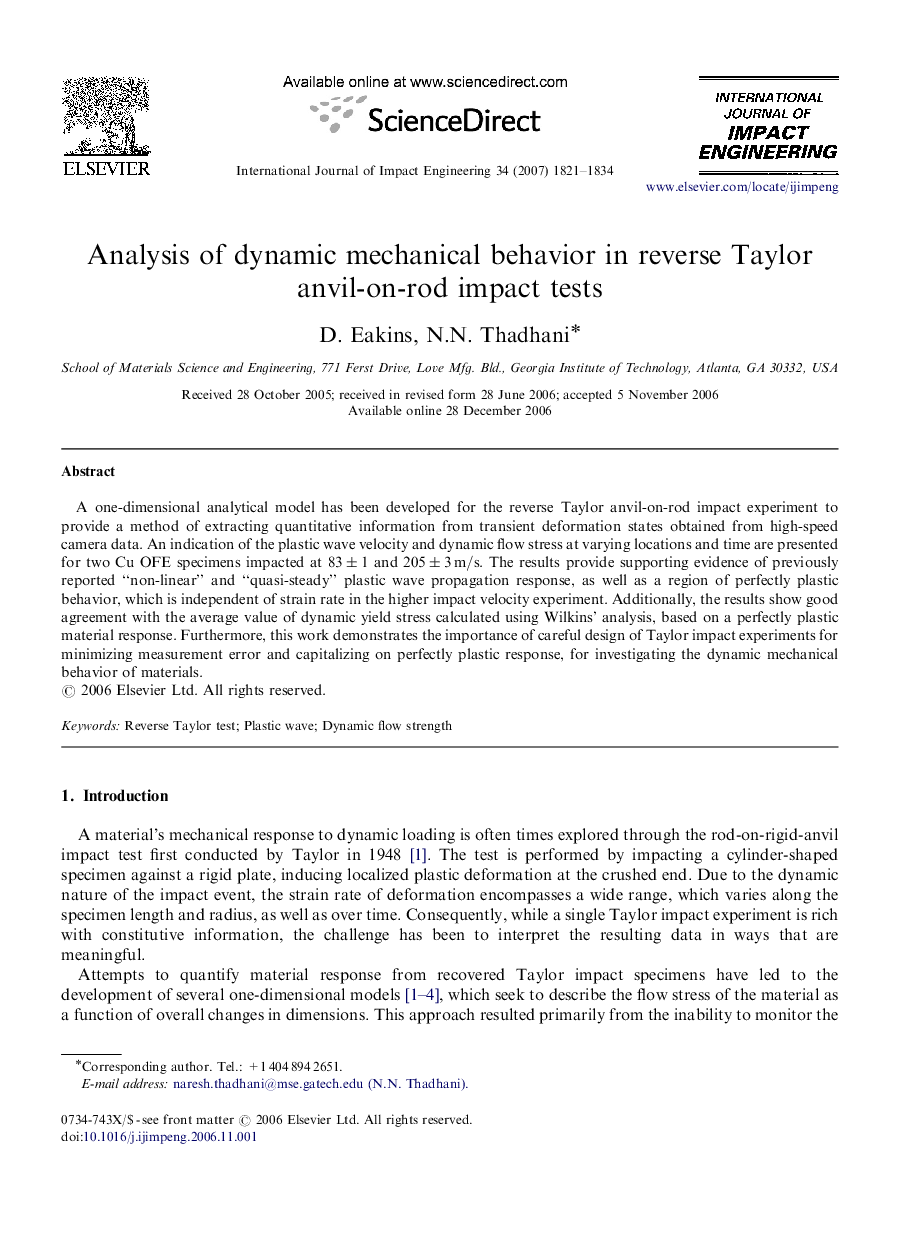| کد مقاله | کد نشریه | سال انتشار | مقاله انگلیسی | نسخه تمام متن |
|---|---|---|---|---|
| 779545 | 1464158 | 2007 | 14 صفحه PDF | دانلود رایگان |

A one-dimensional analytical model has been developed for the reverse Taylor anvil-on-rod impact experiment to provide a method of extracting quantitative information from transient deformation states obtained from high-speed camera data. An indication of the plastic wave velocity and dynamic flow stress at varying locations and time are presented for two Cu OFE specimens impacted at 83±183±1 and 205±3m/s. The results provide supporting evidence of previously reported “non-linear” and “quasi-steady” plastic wave propagation response, as well as a region of perfectly plastic behavior, which is independent of strain rate in the higher impact velocity experiment. Additionally, the results show good agreement with the average value of dynamic yield stress calculated using Wilkins’ analysis, based on a perfectly plastic material response. Furthermore, this work demonstrates the importance of careful design of Taylor impact experiments for minimizing measurement error and capitalizing on perfectly plastic response, for investigating the dynamic mechanical behavior of materials.
Journal: International Journal of Impact Engineering - Volume 34, Issue 11, November 2007, Pages 1821–1834